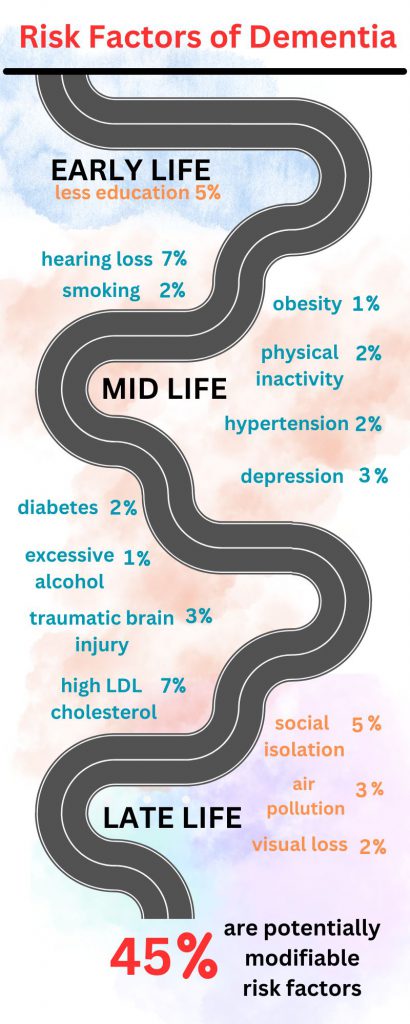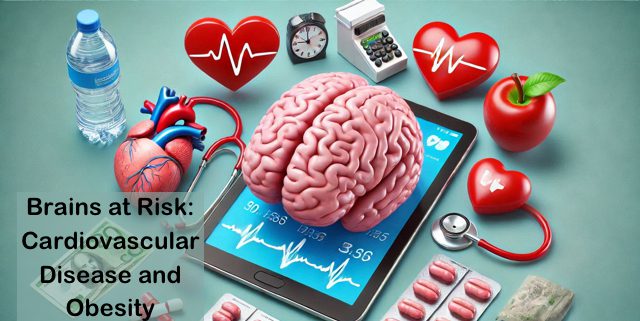Brain health, what is it? A recent study using the data from the United Kingdom (UK) Biobank Research Study that can give clues as to ways to keep brains functioning like a well tuned automobile.
What is the UK Biobank Research Study?
Between 2006 and 2010, the UK Biobank Research Study recruited half a million (500,000) participants aged 40 to 69. These participants agreed to provide regular bloodwork, urine and saliva samples, complete surveys on their lifestyle, undergo genetic testing and consented to having their medical records linked to this information. Once anonymized, all of this information is used in prospective research studies to help research science better understand a wide range of chronic conditions, from their prevention to their progression and treatment. Almost 20 years later, the program is still going strong.
This year, a study published in the Journal of Neurology, Neurosurgery and Psychiatry utilized data from over 34,000 UK Biobank participants to understand how cardiovascular disease and obesity impact the brain, specifically the volume or size of the brain. [1]
Brain Health Study Particulars
To understand participants brain volume, all participants underwent structural brain magnetic resonance imaging (MRI) scans.
To obtain information on obesity, participants had MRI scans done of their abdomens to measure visceral adipose tissue (fat). Visceral fat is fat that surrounds the organs of your abdomen: your stomach, liver and intestines. It is “deep” fat, lying behind the wall of your abdominal muscle. It is also described as “active” fat, but not active in a good way. It is the fat that causes inflammation, diabetes and cardiovascular issues.
The research team also used the Framingham risk score: a well known measuring tool which calculates cardiovascular risk based on lifestyle factors like smoking and physical activity as well as physical information like age, having high blood pressure, cholesterol and diabetes.[1]
The APOE Gene Test
Along with cardiovascular disease and obesity, two other factors were studied to learn about their influence on brain volume. One was gender and the second was the APOE gene.
The APOE gene is responsible for creation of apolipoprotein E. As discussed in previous posts, genes provide the information for building proteins for use throughout the body. Apolipoprotein E joins with fats (lipids) to create lipoproteins and is involved in transporting fats and cholesterol through the blood. There are three types of APOE genes called e2, e3, and e4. We inherit one APOE gene from each of our parents.
The APOE gene has been linked to the development of Alzheimers. Specifically, people who have inherited just one of the e4 version of the APOE gene from a parent are at higher risk of being afflicted with Alzheimers.
For this study, the researchers compared brain volume in those who had inherited an APOE e4 gene and those who did not have that gene.
Study Findings
First, it didn’t matter if a person carried the APOE 34 version of the gene or not, if a person was a higher cardiovascular risk, they had a lower volume of grey matter in their brain. The areas of the brain that were the most affected were the postcentral gyrus, the frontal lobe, the temporal lobe and the thalamus.
The postcentral gyrus is responsible for perception of touch, pain, pressure and temperature. The frontal lobe is involved in social understanding, reasoning, judgement and decision-making, learning and recall, executive function like attention span. The temporal lobe handles memory storage and recall, emotional reactions and processing, language speaking and understanding. It is where what comes into through your ears is understood; where auditory processing and interpretation occurs. The thalamus is a type of relay station. It is where information from the all the senses (except smell) go and then are processed and sent to other parts of the brain. It is the part of the brain that regulates wakefulness/alertness and decides on what, of all the vast amount of information your brain receives, you pay attention to. It is also involved with learning and memory storage.
The impact of cardiovascular disease risk on brain volume was greatest in men between the ages of 55 and 64. In women, the strongest effects were seen between 65 and 74.
Lancet Commission’s Findings on Dementia Prevention
Through reviews and meta-analysis of research, the Lancet Commission has identified 14 modifiable risk factors that can delay or reduce 45% of cases of dementia. [2]

In conclusion: lose weight, reduce high LDL cholesterol, protect your hearing, and increase your activity levels. These and the other steps described above can help reduce your risk of developing dementia. Doing this throughout life encourages good health and improves your experience of living well.
References:
[1]Nowell, J., Gentleman, S., Edison, P. Cardiovascular risk and obesity impact the loss of grey matter volume earlier in males than females. . Journal of Neurology, Neurosurgery & Psychiatry (2024). DOI: 10.1136/jnnp-2024-333675, https://jnnp.bmj.com/content/early/2024/11/07/jnnp-2024-333675
[2]Livingston G, Huntley J, Liu KY, Costafreda SG, Selbæk G, Alladi S, Ames D, Banerjee S, Burns A, Brayne C, Fox NC, Ferri CP, Gitlin LN, Howard R, Kales HC, Kivimäki M, Larson EB, Nakasujja N, Rockwood K, Samus Q, Shirai K, Singh-Manoux A, Schneider LS, Walsh S, Yao Y, Sommerlad A, Mukadam N. Dementia prevention, intervention, and care: 2024 report of the Lancet standing Commission. Lancet. 2024 Aug 10;404(10452):572-628. doi: 10.1016/S0140-6736(24)01296-0. Epub 2024 Jul 31. PMID: 39096926.






